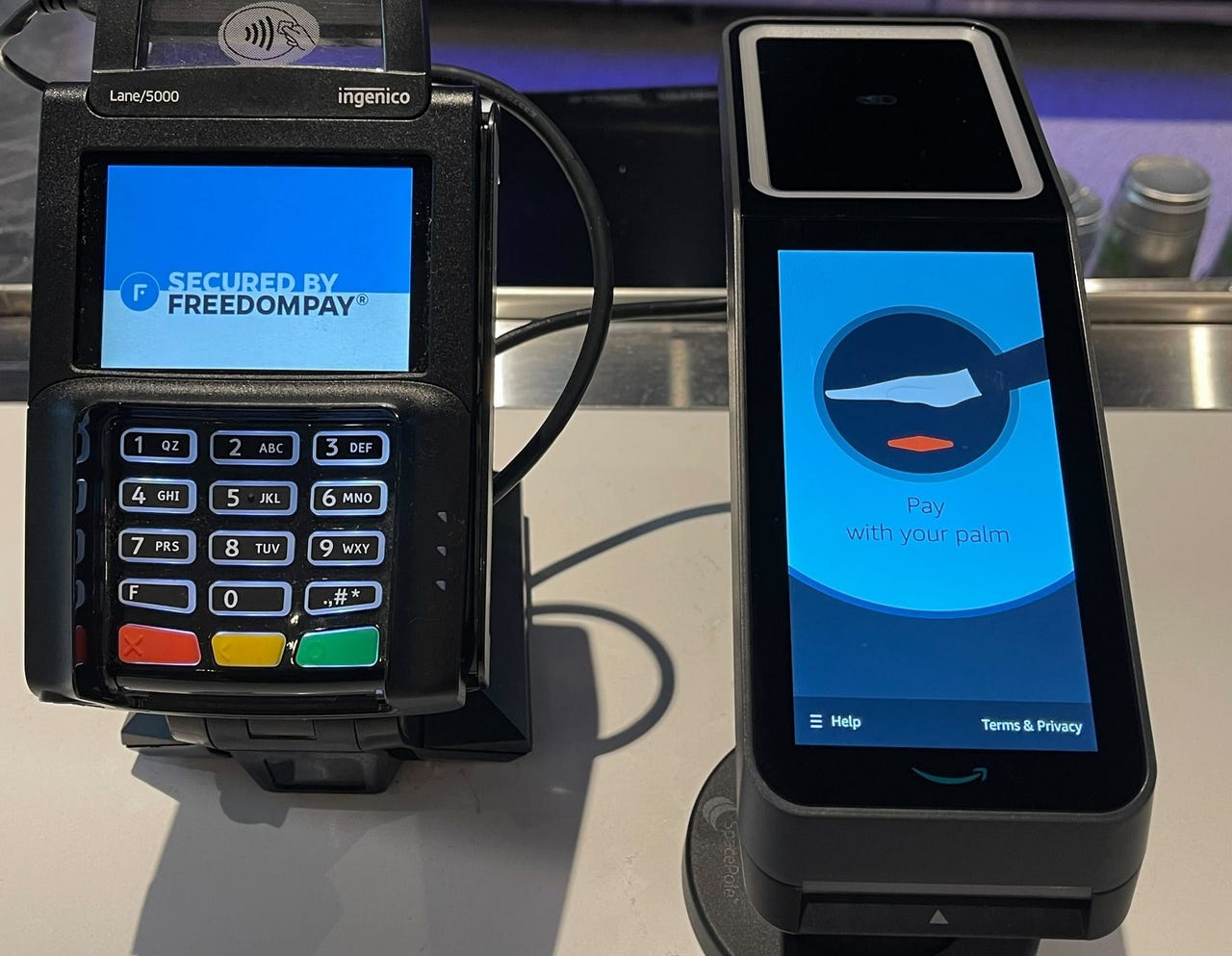































 Image: Amazon
Image: Amazon Thanks to advances in technologies like near-field communication (NFC) and cloud computing, contactless payment options are increasingly common. Two years ago, Amazon debuted a device called Amazon One, which lets you pay for an item in a store with effectively just a wave of your hand.
Now, for the first time, Amazon One is being deployed as a standalone payment option. Starting this weekend, the palm-recognition and payment devices will be available for customers to use at three concession areas at the Climate Pledge Arena in Seattle.
So during the Seattle Kraken's NHL home season opener against the Vegas Golden Knights on Saturday night, fans will be able to visit three locations in the arena -Modelo Cantina, Metropolitan Grill and, 1st Ave Nachos -and pay for their food and beverages by just holding out their palm. There will be a total of 18 Amazon One devices stationed at those three concession areas.
Also: Google Pay vs Samsung Pay: Which contactless payment app is right for you?
There are already four stores in the arena that have Amazon One devices, but those were installed in 2021 as part of a more intensive deployment of Amazon's Just Walk Out technology. Nationwide, Amazon One devices have been deployed in more than 100 stores that also feature Just Walk Out tech. This is the first time the palm-recognition payment option is being deployed separately from the "Just Walk Out" cashier-less platform.
To use the Amazon One system, a customer has to sign up at a kiosk. They simply insert their payment card and hover their palm over the Amazon One device, so the device can scan it. Amazon says the process takes less than a minute and that "thousands of fans" have already signed up for Amazon One.
The device works by recording a user's palm "signature" -a unique identifier in humans. When the devices debuted, Amazon explained that custom algorithms build a map of your palm. Images are encrypted and sent to a "highly secure area" in the cloud where Amazon creates your palm signature. Amazon said it chose to use palms as biometric authenticators as they require an "intentional gesture" to trigger. Additionally, palm recognition offers more privacy than facial recognition, as identities can't be ascertained just based on a handprint.
 Tags quentes :
Inovação
Tags quentes :
Inovação